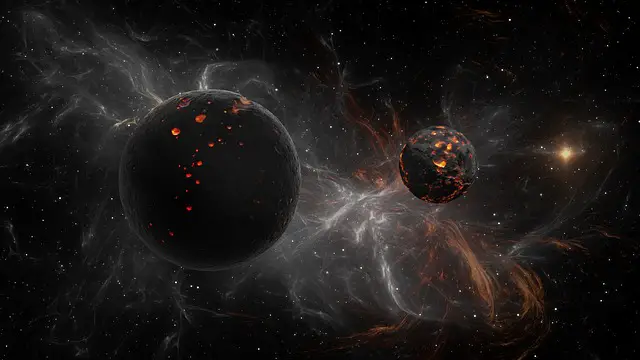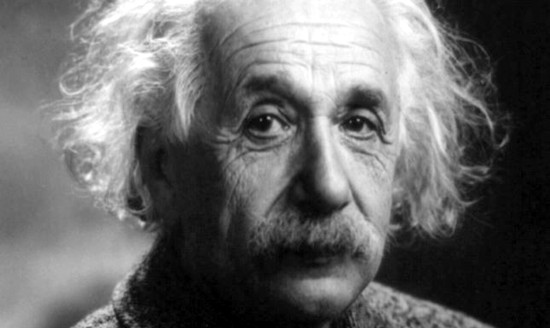
Astronomy is a scientific discipline that has developed in close relationship with physics throughout history. Its objective is the study and understanding of celestial phenomena, celestial bodies and the structure of the universe.
The combination of astronomy and physics has been essential in answering fundamental questions about the cosmos.
In this section we will explain what astronomy is and what its fundamental concepts are from a physics point of view.
What is astronomy?
Astronomy is the science dedicated to the study and observation of celestial objects and phenomena that occur in the universe. Its main objective is to understand the nature, composition, movement and evolution of objects such as stars, planets, galaxies and other celestial bodies, as well as the cosmic processes that affect them.
Astronomers use telescopes and other observing instruments, along with advanced data analysis techniques, to explore the cosmos and unravel its mysteries, thereby contributing to knowledge of the structure and history of the universe as a whole.
The importance of physics in astronomy
The goal of astronomy is the study of the universe as a whole, from planets and stars to galaxies and the cosmos as a whole. To do this, physics provides the theoretical framework and fundamental laws that allow astronomers to understand how these celestial objects work and evolve.
The laws of physics, such as Newton's law of gravity and Einstein's relativity, are essential to explaining the movements and interactions of objects in space.
Newton's law of universal gravitation
 One of the most important contributions of physics to astronomy is Isaac Newton's law of universal gravitation. This law, formulated in the 17th century, establishes that any object in the universe exerts a gravitational force on any other object with a magnitude that depends on their masses and the distance that separates them.
One of the most important contributions of physics to astronomy is Isaac Newton's law of universal gravitation. This law, formulated in the 17th century, establishes that any object in the universe exerts a gravitational force on any other object with a magnitude that depends on their masses and the distance that separates them.
Gravity is the dominant force that governs the movements of the planets around the Sun, the Moon's orbit around the Earth, and many other gravitational interactions in the cosmos.
The law of universal gravitation allowed astronomers to accurately calculate the orbits of the planets and predict astronomical events such as eclipses and transits.
This law also led to the understanding of the mass of celestial objects and helped discover invisible planets and satellites by observing their gravitational effects on other objects.
Einstein's theory of relativity
 At the beginning of the 20th century, Albert Einstein developed the theory of relativity, which had a significant impact on astronomy.
At the beginning of the 20th century, Albert Einstein developed the theory of relativity, which had a significant impact on astronomy.
General relativity, in particular, reshaped the understanding of gravity. Instead of conceiving of gravity as a force, general relativity describes it as the curvature of space-time caused by the presence of mass and energy. This led to a deeper understanding of gravity in the context of astronomy.
The theory of relativity also predicted notable astronomical effects, such as the bending of light from stars near the Sun during a solar eclipse, which was confirmed during Arthur Eddington's expedition in 1919.
Furthermore, relativity predicts the existence of black holes, extremely dense celestial objects whose gravity is so intense that nothing can escape their attraction, not even light.
Black holes have become key objects of study in modern astronomy and physics.
Spectroscopy and particle physics
Spectroscopy is another area where physics has had a significant impact on astronomy. Spectroscopy is based on the study of electromagnetic radiation emitted or absorbed by celestial objects.
By breaking light down into its spectral components, astronomers can determine the chemical composition of stars and galaxies, as well as the rate of their expansion.
Particle physics has also contributed to our understanding of the universe. The detection of high-energy subatomic particles, such as neutrinos, protons and cosmic rays, from celestial sources has provided valuable information about extreme processes in the universe, such as supernova explosions and active galaxy nuclei.
10 fundamental concepts in astronomy
 Astronomy is a science that encompasses a wide variety of fundamental concepts. Below are some of the most essential concepts:
Astronomy is a science that encompasses a wide variety of fundamental concepts. Below are some of the most essential concepts:
-
Star: Stars are luminous celestial objects that generate their own energy through nuclear fusion in their cores. They are crucial in astronomy, since they constitute the source of light and energy in the universe.
-
Planet: Planets are celestial bodies that orbit around a star, like our own planet Earth. They are classified into inner (rocky) planets and outer (gaseous) planets.
-
Galaxy: A galaxy is an immense collection of stars, planets, gas and dust, united by gravity. The Milky Way is our galaxy, and there are billions of galaxies in the known universe.
-
Nebula: A nebula is a cloud of gas and dust in space. They can be stellar nurseries where new stars are born or remains of dead stars.
-
Constellation: A constellation is an apparent pattern of stars in the night sky. The constellations are used as a guide to locate celestial objects.
-
Orbit: The orbit is the path that a celestial object follows around another due to the force of gravity. For example, planets orbit the Sun.
-
Eclipse: An eclipse is an event in which a celestial object comes between another object and the light source, creating shadows. Solar and lunar eclipses are common examples.
-
Supernova: A supernova is an extremely powerful stellar explosion that can release more energy in a short period than an entire star does in its lifetime.
-
Black hole: A black hole is a region of space where gravity is so intense that nothing, not even light, can escape its gravitational pull.
-
Big Bang Theory: The Big Bang is the theory that describes the origin of the universe approximately 13.8 billion years ago from an initial explosion. This theory explains the expansion of the universe and its evolution over time.